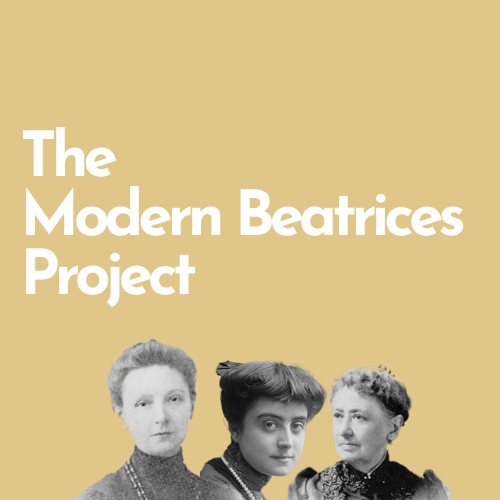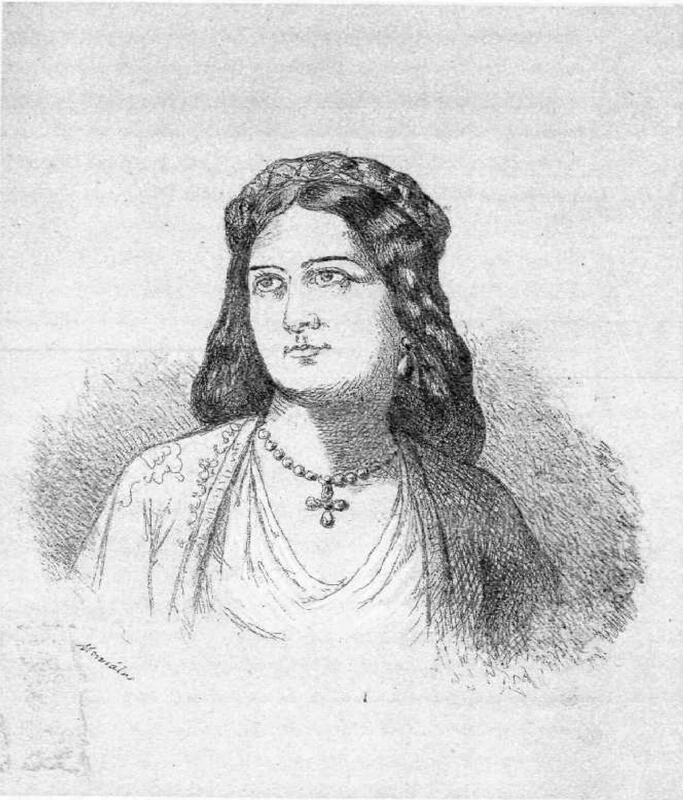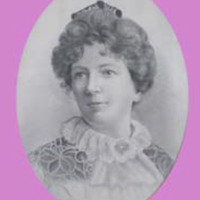Person
Mignaty, Albana Margherita (1827-1887)
- Title
- Albana Margherita Mignaty
- Full Name
- Mignaty, Albana Margherita (1827-1887)
- Lifespan
- 1827-1887
- Country of origin
- Greece
- Occupation
- Salonnière
- via Larga (later via Cavour), in Florence
- Periodical contributor
-
The Daily News
Rivista di Firenze - Author
- Short biography
-
Margherita Albana was born in Corfu, then a British protectorate, to Demetrio Albana and Caterina di Niccolò Palatino, the elder sister of two brothers. Her date of birth is uncertain: according to Angelo De Gubernatis, it was around 1827; for Edouard Schuré it was in 1831. The two biographers, however, linked to her by intense romantic relationships are not reliable. Her maternal aunt, Nina Palatianò, married an English gentleman, Sir Frederick Adam, high commissioner for the Ionian Islands, and together they were able to adopt their niece. They took her with them to India, where they stayed between 1832 and 1837, the period in which Adam was the governor of Madras.
After the family moved to Rome, she met Giorgio Mignaty, a painter originally from Cephalonia, and married him in the early 1840s, settling with him in various Italian cities, including Venice and, eventually, around 1844-45, in Florence.
The couple had three children: two, Demetrio Federick and Elena, died at eighteen months (1846) and five years (1853) respectively. The other, Aspasia, was an amateur painter and remained close to her mother until her passing. Margherita wrote and spoke fluent English, French, Greek, and Italian; she inserted herself easily into Florentine social and worldly; her salon in Via Larga (later Via Cavour) was a meeting point for foreigners and intellectuals passing through the city. Among the many exponents of the local liberal elite who constituted a point of contact between the moderate right and a more mobile and vast area of opinion were Ubaldino Peruzzi, Francesco Dall’Ongaro, Angelo De Gubernatis. Margherita was a friend and confidant of the historian Pasquale Villari, and became a writer in the very years in which Villari obtained the Chair of Modern History in Florence.
During the years of unification, Margherita fervently supported the Italian cause, writing popular Florentine correspondence for The Daily News from 1859 to 1866. As a Greek noblewoman writing from Florence in favour of Italian independence, she embodied the romantic myth of the nation in the eyes of English public opinion, thanks to an ideal unification of Greece, for which Byron had died fighting.
In her correspondence, she gave an account of political events, expressing favourable expressions of the spirit and the character of the Italian people, to correct the negative opinion of English readers. She was the first to publish the state of public education in Italy, writing for Rivista di Firenze (Florence Magazine), run by Atto Vannucci, about fellow countrymen Shelley and Byron.
In 1865, she printed “a historical sketch illustrative of the life and times of Dante Alighieri, with an outline of the legendary history of Hell, Purgatory and Paradise previous to the Divina Commedia” (A. Bertini, Florence 1865).
She was interested in the works of Wagner and wrote “Le theatre de Beyrouth et la Reforme musicale de R. Wagner” (“The Beirut Theatre and the Musical Reform of R. Wagner”) (1873), where she explained the philosophical as much as the technical side of the composer’s work. In line with her interests in Italy’s history and with the English taste for its Renaissance past, she dedicated her “sketches of the historical past of Italy” (Bentley, London 1876) to Lord Gladstone.
Also dating back from the sixties was her intense relationship with Edouard Schuré, the Alsatian philosopher with whom she shared a passion for Wagner’s music, Italian art and occultism. Schuré dedicated a chapter to her in his “Donne Ispiratrici” (“Inspirational Women”) (Paris 1930), and kept up correspondence with her husband even after his muse’s death. In 1881, she published “Le Corrège, sa vie et son oeuvre” (“Correggio, His Life and Work”) (Fischbacher, Paris 1881), a treatise on practical aesthetics, thanks to which she was awarded honorary citizenship of the city, in whose civic collections one can also find a self-portrait of her.
Margherita died in Livorno on 20th September 1887; her body received public honours and was displayed in a room in Florence Station, where Eduard Schuré and Angelo De Gubernatis recited a eulogy. She is buried in the Protestant cemetery at Porta Romana. - Translation by Alison Isherwood
-
Margherita Albana nacque a Corfù, allora protettorato inglese, da Demetrio Albana e Caterina di Niccolò Palatino, sorella maggiore di due maschi. Il suo anno di nascita è incerto: secondo Angelo De Gubernatis è intorno al 1827, per Edouard Schuré è il 1831, ma i due biografi, legati a lei da rapporti sentimentali intensi, non sono attendibili. La sorella della madre, Nina Palatianò, sposò un gentiluomo inglese, sir Frederick Adam, alto commissario per le isole Jonie, e insieme ottennero di adottare la nipote: la portarono con loro in India dove rimasero tra il 1832 e il 1837, periodo in cui Adam fu governatore di Madras.
Dopo il trasferimento della famiglia a Roma conobbe Giorgio Mignaty, pittore originario di Cefalonia, e lo sposò nei primi anni Quaranta dell'Ottocento, stabilendosi con lui in diverse città italiane tra cui Venezia e, infine, intorno al 1844-45, a Firenze. La coppia ebbe tre figli: due, Demetrio Federick ed Elena, morti rispettivamente a diciotto mesi (1846) e a cinque anni (1853), l'altra, Aspasia fu una pittrice dilettante e rimase vicina alla madre fino alla sua morte. Margherita scriveva e parlava correntemente inglese, francese, greco e italiano; si inserì agevolmente nella vita sociale e mondana fiorentina; il suo salotto di via Larga (poi via Cavour) fu punto di incontro di stranieri e intellettuali di passaggio in città, di molti esponenti dell'élite liberale locale che costituivano un punto di contatto tra la Destra moderata e un'area di opinione più mobile e vasta, come dimostrano i nomi di Ubaldino Peruzzi, Francesco Dall'Ongaro, Angelo De Gubernatis. Margherita era amica e consigliera dello storico Pasquale Villari, e diventava scrittrice proprio negli anni in cui Villari otteneva la cattedra di Storia moderna a Firenze.
Negli anni dell'unificazione appoggiò con passione la causa italiana scrivendo dal 1859 al 1866 apprezzate corrispondenze fiorentine per «The Daily News» incarnando, lei nobildonna greca che da Firenze, scriveva a favore dell'indipendenza italiana, il mito romantico della nazione agli occhi dell'opinione pubblica inglese, grazie ad una ideale unione del Risorgimento della Grecia per cui Byron era morto combattendo. Nelle sue corrispondenze dava conto di eventi politici, esprimeva impressioni favorevoli sullo spirito e il carattere degli italiani, per correggere l'opinione negativa dei lettori inglesi; fu la prima a pubblicare lo stato dell'istruzione pubblica in Italia, scrisse sulla «Rivista di Firenze» diretta da Atto Vannucci, dei connazionali Shelley e Byron.
Nel 1865 dette alle stampe ""An historical sketch illustrative of the life and times of Dante Alighieri, with an outline of the legendary history of Hell, Purgatory and Paradise previous to the Divina commedia"" (A. Bertini, Firenze 1865); si interessò dell'opera di Wagner e scrisse ""Le théatre de Beyrouth et la Reforme musicale de R. Wagner"" (1873) dove spiegò tanto la parte filosofica quanto la tecnica del compositore. Sempre in linea con i suoi interessi sulla storia d'Italia e con il gusto inglese per il suo passato rinascimentale, dedicò a lord Gladstone il suo ""Sketches of the historical past of Italy"" (Bentley, Londra 1876).
Degli anni Sessanta è anche la intensa relazione con Edouard Schuré, il filosofo alsaziano col quale condivideva la passione per la musica di Wagner, l'arte italiana e l'occultismo. Schuré le dedicò un capitolo nel suo ""Donne ispiratrici"" (Parigi 1930), ed intrattenne con il marito di lei un carteggio anche successivo alla morte della sua musa. Nel 1881 esce ""Le Corrège, sa vie et son oeuvre"" (Fischbacher, Paris 1881), trattato di estetica pratica grazie al quale le fu conferita la cittadinanza onoraria della città nelle cui raccolte civiche si trova anche un suo autoritratto.
Morì a Livorno il 20 settembre del 1887; la salma ebbe pubblici onori, fu esposta in una sala della stazione di Firenze dove Edouard Schuré e Angelo De Gubernatis recitarono un'orazione funebre. È sepolta nel cimitero dei protestanti di Porta Romana. - Scaraffia Lucetta, Isastia Anna Maria, ""Donne ottimiste. Femminismo e associazioni borghesi nell’Otto e Novecento"", Il Mulino, Bologna 2002
- SIUSA - Archivi di Personalità
- Archival papers
- Selected List of Publications
- (1865). An historical sketch illustrative of the life and times of Dante Alighieri with an outline of the legendary history of Hell, Purgatory and Paradise previous to the Divina commedia. Firenze. A. Bertini
-
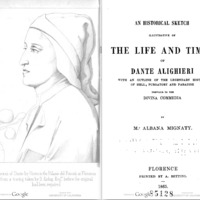 An historical sketch illustrative of the life and times of Dante Alighieri, with an outline of the legendary history of Hell, Purgatory and Paradise previous to the Divina commedia
An historical sketch illustrative of the life and times of Dante Alighieri, with an outline of the legendary history of Hell, Purgatory and Paradise previous to the Divina commedia
- (1876). Sketches of the historical past of Italy: from the fall of the Roman empire to the earliest revival of letters and arts. London. R. Bentley & sons
-
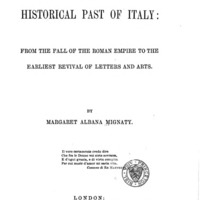 Sketches of the historical past of Italy: from the fall of the Roman empire to the earliest revival of letters and arts
Sketches of the historical past of Italy: from the fall of the Roman empire to the earliest revival of letters and arts
-
(1889). Byron e Shelley e studio postumo sul genio di Shelley ed il suo Prometeo. Firenze. C. Ademollo
(1894). Caterina da Siena e la parte ch'ebbe negli avvenimenti d'Italia nel secolo decimoquarto. Firenze. Stabilimento Tipog. G. Civelli - Link to external sources
-
Scaraffia Lucetta, Isastia Anna Maria, ""Donne ottimiste. Femminismo e associazioni borghesi nell’Otto e Novecento"", Il Mulino, Bologna 2002
Schuré Édouard, ""Donne ispiratrici. Matilde Wesendonk, Cosima Liszt, Margherita Albana Mignaty, Gabriella Delzant"", Laterza, Bari 1930
"
Linked resources
- Resource class
- Person
Corfu Residence, Tzavrou - Kassiopi - Sidari, Glyfa, Kassopaia Municipal Unit, Municipality of Northern Corfu, Corfu Regional Unit, Ioanian Islands, Peloponnese, Western Greece and the Ionian, 490 81, Grecia
Part of Mignaty, Albana Margherita (1827-1887)
Annotations
There are no annotations for this resource.
Position: 2 (472 views)
